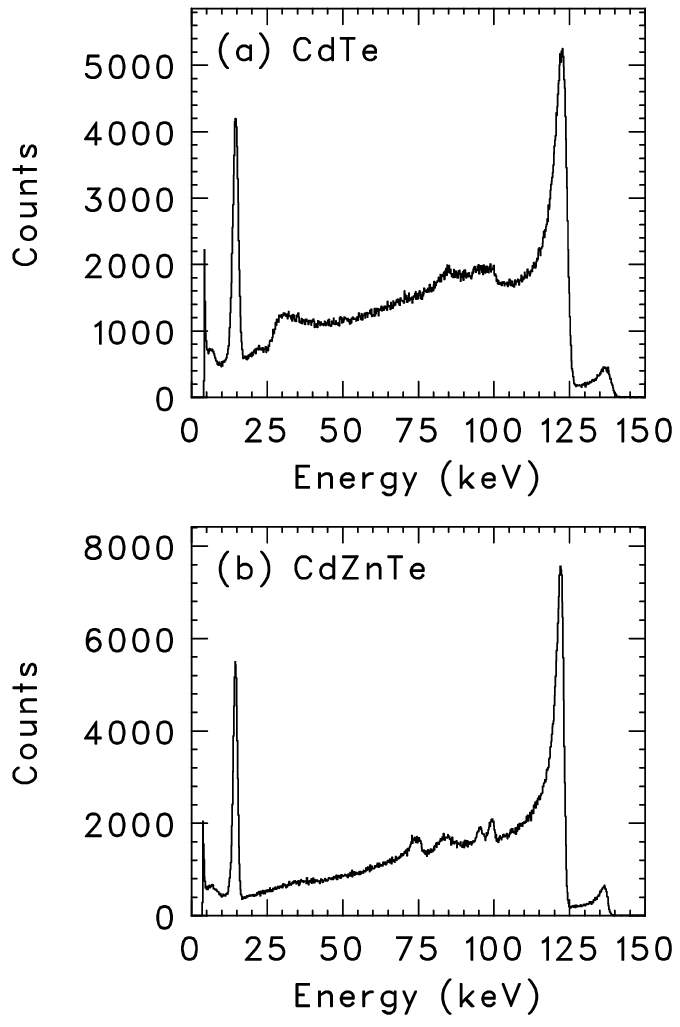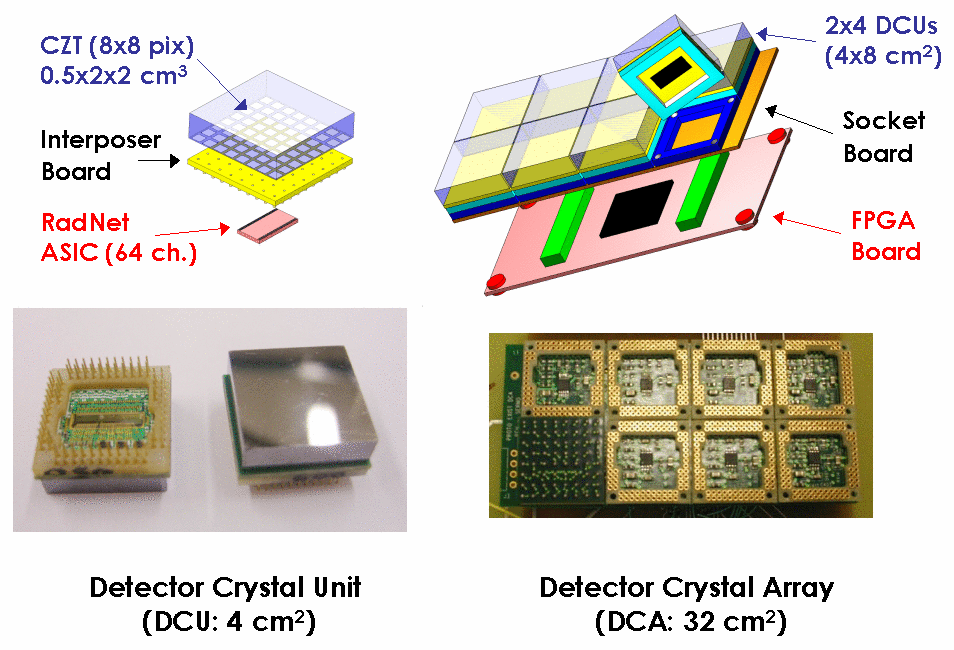

#Isotopic composition of czt detectors full#
Our shelf is full of new possibilities we have yet to investigate more deeply. Despite the advancements facilitated by the novel material, Kanatzidis added that the study with colleagues from Northwestern University and Argonne National Laboratory does not end. Kanatzidis’ laboratory investigated over 60 potential compounds before zeroing on cesium lead bromide. But Kanatzidis added that advancements in this field have been rather slow, and this is mostly because investigators target either X-ray and gamma-ray detectors or materials synthesis-his team, however, does both. Resolution is equally crucial to medical imaging, such as SPECT scans.Īccording to Kanatzidis, there is a significant amount of interest in the field, especially considering the safety and cost implications of faulty equipment. To the team’s amazement, even their own material could have more impurities by as much 5 to 10 times when compared to CZT and can still perform, rendering it easier and more cost-effective to create. The novel material can allow users to detect the source of gamma rays more accurately by pinpointing the variations down to a few percentage points.įurthermore, the use of even slightly impure materials can usually make detectors non-functional or less efficient, forcing device manufacturers to look for ultrapure CZT to create effective readings.

Gamma rays produced by radioactive isotopes slightly vary in energy, often varying by only a few percentage points. However, new studies that enhanced the sizes of crystals and manipulated pixels instead of planar electrodes have improved the spectral resolution much beyond that of traditional designs, from about 3.8% to 1.4%, identifying energy even from extremely weak sources. Elite Security Systems Adds Smoke Detection Device to its Existing Home Security Systems.Sensors for Security: Their Importance and Potential Impact.Chemring Detection Systems Receives Contracts to Evaluate Chemical Detector and Non-Contact Vapor Detector.In previous studies, the researchers evaluated the performance of the latest cesium lead bromide detector against the traditional cadmium zinc telluride (CZT) detector, and they observed that it performed equally well in identifying gamma rays. Morrison Professor of Chemistry in the Weinberg College of Arts and Sciences, and has a joint appointment with Argonne National Laboratory. The study was recently published in the Nature Photonics journal on December 7 th, 2020. Mercouri Kanatzidis, Study Lead and Professor, Northwestern University This takes us a step closer to creating electronic systems for medical diagnostics and imaging, airport security and more. Using the perovskite material, we have achieved high resolution in energy detection for gamma rays using a pixelated detector design. These detectors are also used in both nuclear forensics and medical diagnostics imaging. Such detectors are crucial for national security, where they are used for detecting unlawful nuclear materials that are smuggled across national borders. With the novel technique, users can detect legal gamma rays versus the illegal ones. It took over 10 years to reach these results.Īccording to Mercouri Kanatzidis, a professor from Northwestern University who headed the study, apart from being less expensive than standard devices, the latest technique developed for identifying gamma rays can easily distinguish between rays of varying energies.
#Isotopic composition of czt detectors portable#
The researchers used cesium lead bromide in the form of perovskite crystals and successfully designed extremely efficient detectors in small and portable devices for very large detectors and also for field researchers. Now, scientists from Northwestern University have designed novel devices based on a cost-effective material to help detect and identify radioactive isotopes. Security officials have to ensure that unsafe materials are not smuggled into a country by criminals, but it has become quite costly and difficult to detect nuclear substances.


 0 kommentar(er)
0 kommentar(er)
